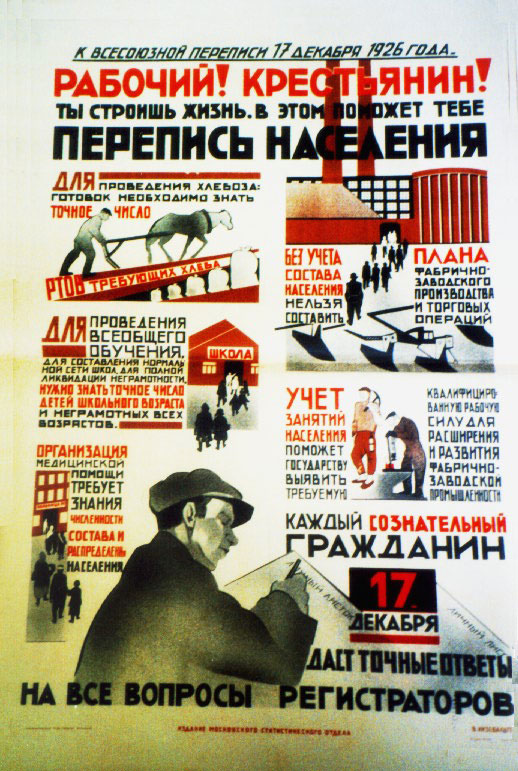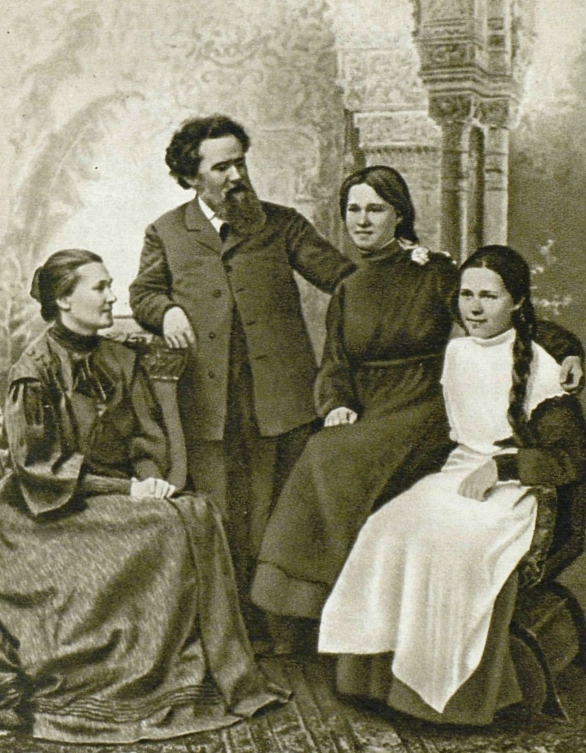|
Afanasyevo, Kirov Oblast
Afanasyevo (russian: Афанасьево) is an urban-type settlement and the administrative center of Afanasyevsky District of Kirov Oblast, Russia. Population: Geography Located in a forested area on the right bank of the Kama River, the settlement covers and includes of roads. History The settlement was first recorded as the ''pogost'' of Zyuzdino-Afanasyevskoye in 1607, with a wooden church that burned down in 1729. According to documents in the oblast archives, the parish centered on the church was founded in the mid-17th century. A copy of the church charter from 1681 giving permission to build a new church was preserved. A second wooden church was built in 1730 and was dismantled in 1807, and a third in 1872. By the late 19th century, the volost centered on Zyuzdino-Afanasyevskoye, part of Glazovsky Uyezd of Vyatka Governorate, included 34 villages and settlements with a mixed population of Permians and Russians. The inhabitants engaged in farming, logging, and ... [...More Info...] [...Related Items...] OR: [Wikipedia] [Google] [Baidu] |
Kirov Oblast
Kirov Oblast (russian: Ки́ровская о́бласть, ''Kirovskaya oblast'') is a federal subject of Russia (an oblast) in Eastern Europe. Its administrative center is the city of Kirov. Population: 1,341,312 ( 2010 Census). Geography Natural resources The basis of the natural resources are forest (mostly conifers), phosphate rock, peat, furs, water and land resources. There are widespread deposits of peat and non-metallic minerals: limestone, marl, clay, sand and gravel, as well as the extremely rare mineral volkonskoite. In recent decades, in the east of the area revealed a minor recoverable oil reserves and deposits of bentonite clays. In the area is the largest in Europe Vyatsko-Kama deposit of phosphate rock. The area is rich in mineral springs and therapeutic mud. On the territory of Kumyonsky District is famous resort town of federal significance Nizhneivkino, which on treatment and rest come to residents of the Kirov region and many regions of Russia. Hydrogra ... [...More Info...] [...Related Items...] OR: [Wikipedia] [Google] [Baidu] |
Zemstvo
A ''zemstvo'' ( rus, земство, p=ˈzʲɛmstvə, plural ''zemstva'' – rus, земства) was an institution of local government set up during the great emancipation reform of 1861 carried out in Imperial Russia by Emperor Alexander II of Russia. Nikolay Milyutin elaborated the idea of the zemstva, and the first zemstvo laws went into effect in 1864. After the October Revolution the zemstvo system was shut down by the Bolsheviks and replaced with a multilevel system of workers' and peasants' councils ("soviets"). Structure The system of elected bodies of local self-government in the Russian Empire was represented at the lowest level by the mir and the volost and was continued, so far as the 34 Guberniyas (governorates) of old Russia were concerned, in the elective district and provincial assemblies (zemstvo). The goal of the zemstvo reform was the creation of local organs of self-government on an elected basis, possessing sufficient authority and independence to re ... [...More Info...] [...Related Items...] OR: [Wikipedia] [Google] [Baidu] |
Machine Tractor Station
The machine tractor station (MTS) (russian: машинно-тракторная станция ''mashinno-traktornaya stantsiya'', МТС) was a state enterprise for ownership and maintenance of agricultural machinery that were used in kolkhozy (collective farms operated by the government). Each MTS was responsible for around 40 kolkhozy. The first ever MTS was organized in the Odessa Oblast (Shevchenkivska MTS). MTSs were introduced in 1928 as a shared resource of scarce agricultural machinery and technical personnel. William Taubman, Khrushchev's biographer, describes them as follows: As the name implies, the MTSs were rural agencies that supplied collective farms with agricultural machinery and people to run it. They were set up in the late 1920s and early 1930s, when the kolkhozy were too weak and disorganized to manage their own equipment. Ideologically, collective farms were a "lesser" form of property (since theoretically they belonged to the collective rather than the sta ... [...More Info...] [...Related Items...] OR: [Wikipedia] [Google] [Baidu] |
1926 Soviet Census
The 1926 Soviet Census took place in December 1926. It was an important tool in the state-building of the USSR, provided the government with important ethnographic information, and helped in the transformation from Imperial Russian society to Soviet society. The decisions made by ethnographers in determining the ethnicity (''narodnost'') of individuals, whether in the Asiatic or European parts of the former Russian Empire, through the drawing up of the "List of Ethnicities of the USSR", and how borders were drawn in mixed areas had a significant influence on Soviet policies. Ethnographers, statisticians, and linguists were drawing up questionnaires and list of ethnicities for the census. However, they also had the more ambitious goal of deliberately transforming their identities according to the principles of Marxism–Leninism. As Anastas Mikoyan put it, the Soviet Union was: "creating and organising new nations". Previous censuses The First All-Union Census of the Soviet Union f ... [...More Info...] [...Related Items...] OR: [Wikipedia] [Google] [Baidu] |
Komsomol
The All-Union Leninist Young Communist League (russian: link=no, Всесоюзный ленинский коммунистический союз молодёжи (ВЛКСМ), ), usually known as Komsomol (; russian: Комсомол, links=no ()), a syllabic abbreviation of the Russian ), was a political youth organization in the Soviet Union. It is sometimes described as the youth division of the Communist Party of the Soviet Union (CPSU), although it was officially independent and referred to as "the helper and the reserve of the CPSU". The Komsomol in its earliest form was established in urban areas in 1918. During the early years, it was a Russian organization, known as the Russian Young Communist League, or RKSM. During 1922, with the unification of the USSR, it was reformed into an all-union agency, the youth division of the All-Union Communist Party. It was the final stage of three youth organizations with members up to age 28, graduated at 14 from the Young Pioneer ... [...More Info...] [...Related Items...] OR: [Wikipedia] [Google] [Baidu] |
Alexander Kolchak
Alexander Vasilyevich Kolchak (russian: link=no, Александр Васильевич Колчак; – 7 February 1920) was an Imperial Russian admiral, military leader and polar explorer who served in the Imperial Russian Navy and fought in the Russo-Japanese War of 1904–1905 and the First World War. During the Russian Civil War of 1917–1922 he established an anti-communist government in Siberia — later the Provisional All-Russian Government — and became recognized as the "Supreme Leader and Commander-in-Chief of All Russian Land and Sea Forces" by the other leaders of the White movement from 1918 to 1920.Jon Smele (2006) ''Civil War in Siberia: The Anti-Bolshevik Government of Admiral Kolchak, 1918–1920'', Cambridge University Press, . p.77 His government was based in Omsk, in southwestern Siberia. For nearly two years, Kolchak served as Russia's internationally recognized head of state. However, his efforts to unite the White Movement failed; Kolchak refused t ... [...More Info...] [...Related Items...] OR: [Wikipedia] [Google] [Baidu] |
Bolsheviks
The Bolsheviks (russian: Большевики́, from большинство́ ''bol'shinstvó'', 'majority'),; derived from ''bol'shinstvó'' (большинство́), "majority", literally meaning "one of the majority". also known in English as the Bolshevists,. It signifies both Bolsheviks and adherents of Bolshevik policies. were a far-left, revolutionary Marxist faction founded by Vladimir Lenin that split with the Mensheviks from the Marxist Russian Social Democratic Labour Party (RSDLP), a revolutionary socialist political party formed in 1898, at its Second Party Congress in 1903. After forming their own party in 1912, the Bolsheviks took power during the October Revolution in the Russian Republic in November 1917, overthrowing the Provisional Government of Alexander Kerensky, and became the only ruling party in the subsequent Soviet Russia and later the Soviet Union. They considered themselves the leaders of the revolutionary proletariat of Russia. Their beli ... [...More Info...] [...Related Items...] OR: [Wikipedia] [Google] [Baidu] |
Vladimir Korolenko
Vladimir Galaktionovich Korolenko (russian: Влади́мир Галактио́нович Короле́нко, ua, Володи́мир Галактіо́нович Короле́нко; 27 July 1853 – 25 December 1921) was a Ukrainian-born Russian writer, journalist, human rights activist and humanitarian of Ukrainian and Polish origin. His best-known work include the short novel '' The Blind Musician'' (1886), as well as numerous short stories based upon his experience of exile in Siberia. Korolenko was a strong critic of the Tsarist regime and in his final years of the Bolsheviks. Biography Early life Vladimir Korolenko was born in Zhytomyr, Ukraine (Volhynian Governorate), then part of the Russian Empire.Tyunkin, K.I. Foreword. The Works by V.G. Korolenko in 6 volumes. Pravda Publishers. Ogonyok Library. Moscow, 1971. Vol. 1, pp. 3-38 His Ukrainian Cossack father, Poltava-born Galaktion Afanasyevich Korolenko (1810-1868), was a district judge who, "amongst the people ... [...More Info...] [...Related Items...] OR: [Wikipedia] [Google] [Baidu] |
Permians
The Permians or Perm Finns are the peoples who speak Permic languages, in the Uralic language family, and include Komis and Udmurts. Formerly the name Bjarmians was also used to describe these peoples. Recent research on the Finno-Ugric substrate in northern Russian dialects suggests that in Bjarmaland there once lived speakers of other Finno-Ugric languages beside the Permians. The ancestors of the Permians originally inhabited the land called Permia covering the middle and upper Kama River. Permians split into two groups, probably during the 9th century. The Komis came under the rule of the Novgorod Republic in the 13th century and were converted to Orthodox Christianity in the 1360-1370s. In 1471-1478, their lands were conquered by the Grand Duchy of Moscow that later became the Tsardom of Russia. In the 18th century the Russian authorities opened the southern parts of the land to colonization and the northern parts became a place to which criminal and political prisoners were ... [...More Info...] [...Related Items...] OR: [Wikipedia] [Google] [Baidu] |
Afanasyevsky District
Afanasyevsky District (russian: Афана́сьевский райо́н) is an administrativeLaw #203-ZO and municipalLaw #284-ZO district (raion), one of the administrative divisions of Kirov Oblast, thirty-nine in Kirov Oblast, Russia. It is located in the east of the oblast, and borders with Verkhnekamsky District in the north, Perm Oblast in the east, Udmurtia in the south, and Omutninsky District in the west. The area of the district is . Its administrative center is the types of inhabited localities in Russia, urban locality (an urban-type settlement) of Afanasyevo, Kirov Oblast, Afanasyevo. Population: 16,961 (Russian Census (2002), 2002 Census); The population of Afanasyevo accounts for 24.8% of the district's total population. Geography The district is located in the northeast of Kirov Oblast in a region of taiga, along the upper course of the Kama River. It is mostly located in the Upper Kama Valley with elevated topography, especially in the southern part of the distr ... [...More Info...] [...Related Items...] OR: [Wikipedia] [Google] [Baidu] |
Vyatka Governorate
Vyatka Governorate (russian: Вятская губерния, udm, Ватка губерний, mhr, Виче губерний, tt-Cyrl, Вәтке губернасы) was a governorate of the Russian Empire and Russian Soviet Federative Socialist Republic, Russian SFSR, with its capital in city Vyatka (now known as Kirov), from 1796 to 1929. In the governorate’s area were situated most parts of modern Kirov Oblast and Udmurt Republic. It was formed on territory of the historical lands of Vyatka Land, Vyatka ( la, Veticiae). Geography Vyatka Governorate was bordered with Vologda Governorate (to the north), Perm Governorate (to the east), Nizhny Novgorod Governorate, Nizhny Novgorod and Kazan Governorate, Kazan governorates (to the south), and Kostroma Governorate (to the west). Its area was approximately . Administrative divisions The governorate was divided into 11 uyezds: # Vyatsky Uyezd # Glazovsky Uyezd # Yelabuzhsky Uyezd # Kotelnichsky Uyezd # Malmyzhsky Uyezd # N ... [...More Info...] [...Related Items...] OR: [Wikipedia] [Google] [Baidu] |
Glazovsky Uyezd
Glazovsky Uyezd (''Глазовский уезд'') was one of the subdivisions of the Vyatka Governorate of the Russian Empire. It was situated in the eastern part of the governorate. Its administrative centre was Glazov. Demographics At the time of the Russian Empire Census of 1897, Glazovsky Uyezd had a population of 368,587. Of these, 54.7% spoke Russian language, Russian, 41.6% Udmurt language, Udmurt, 2.1% Tatar language, Tatar and 1.5% Komi-Permyak language, Komi-Permyak as their native language. References Glazovsky Uyezd, Uezds of Vyatka Governorate Vyatka Governorate {{Russia-gov-stub ... [...More Info...] [...Related Items...] OR: [Wikipedia] [Google] [Baidu] |







